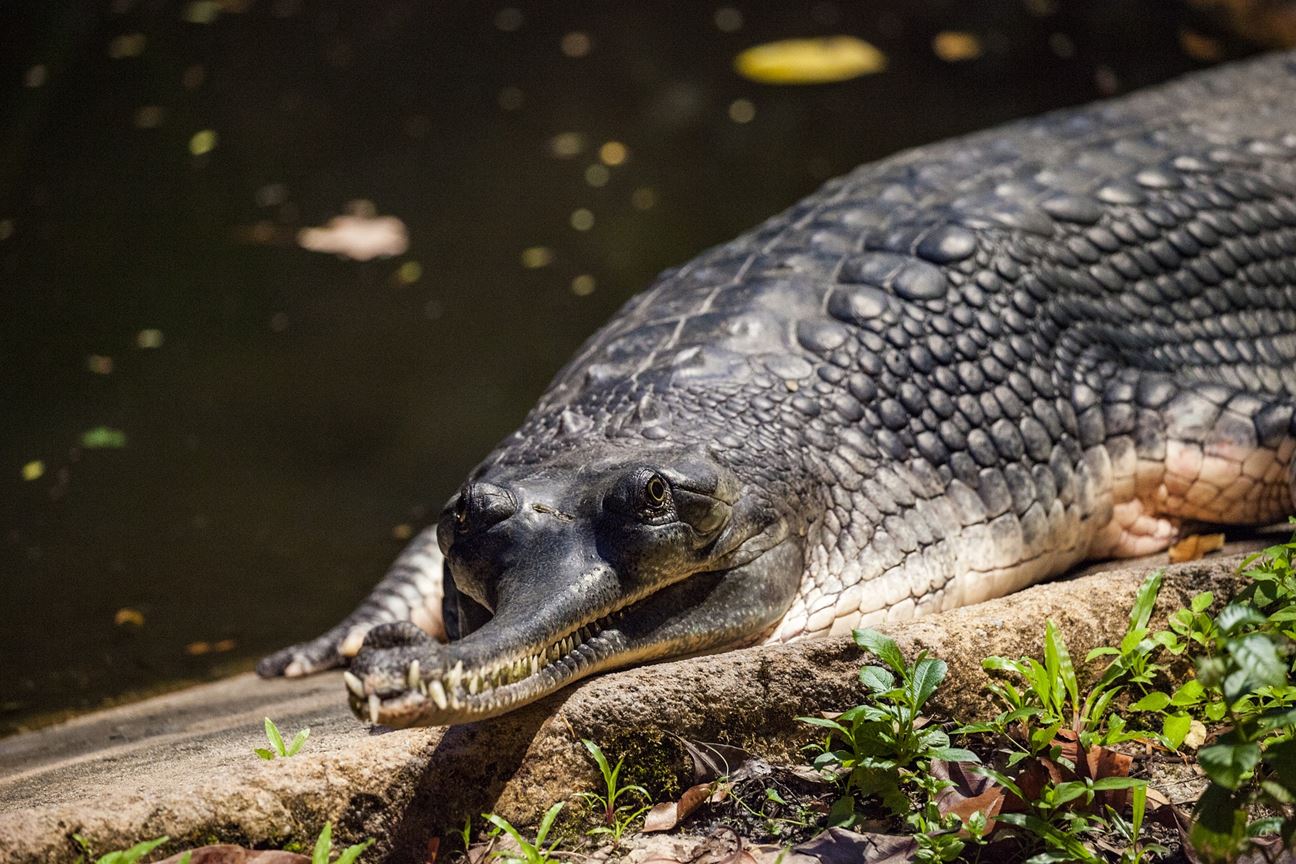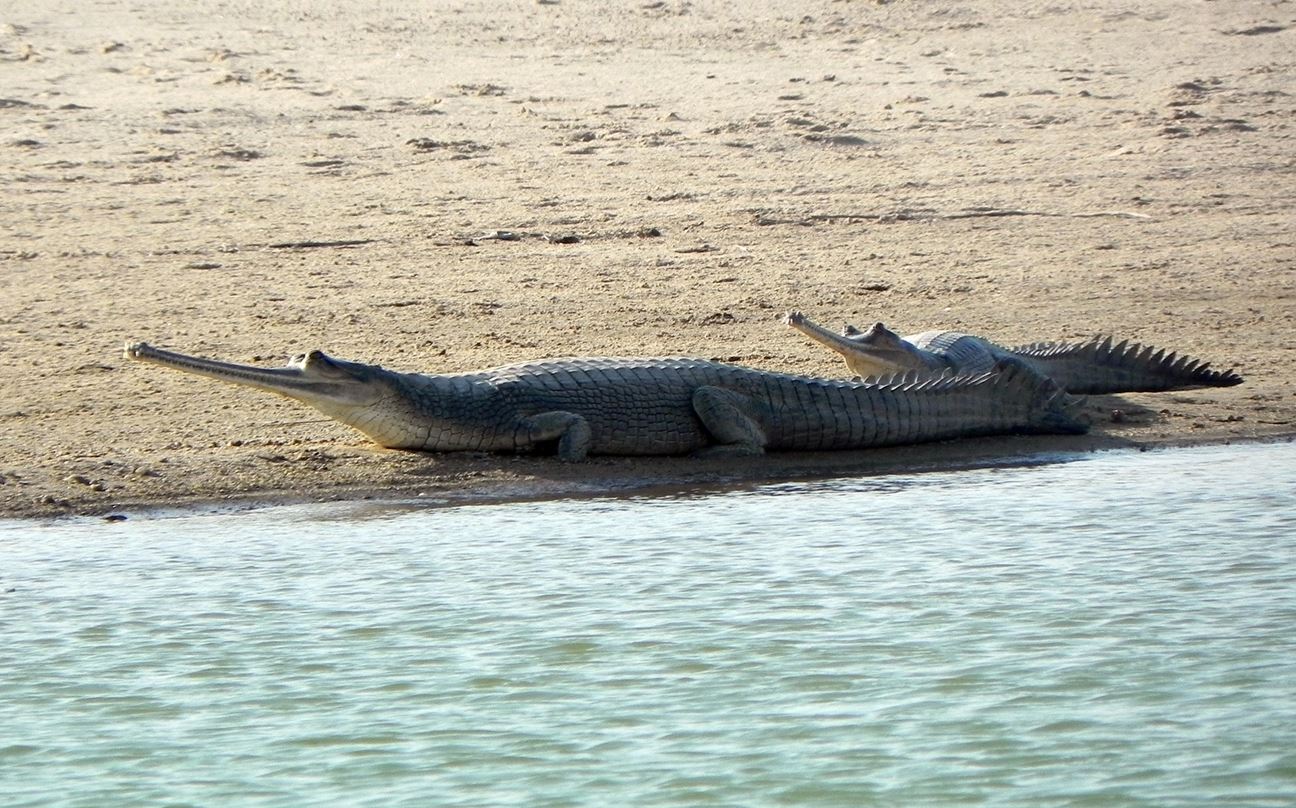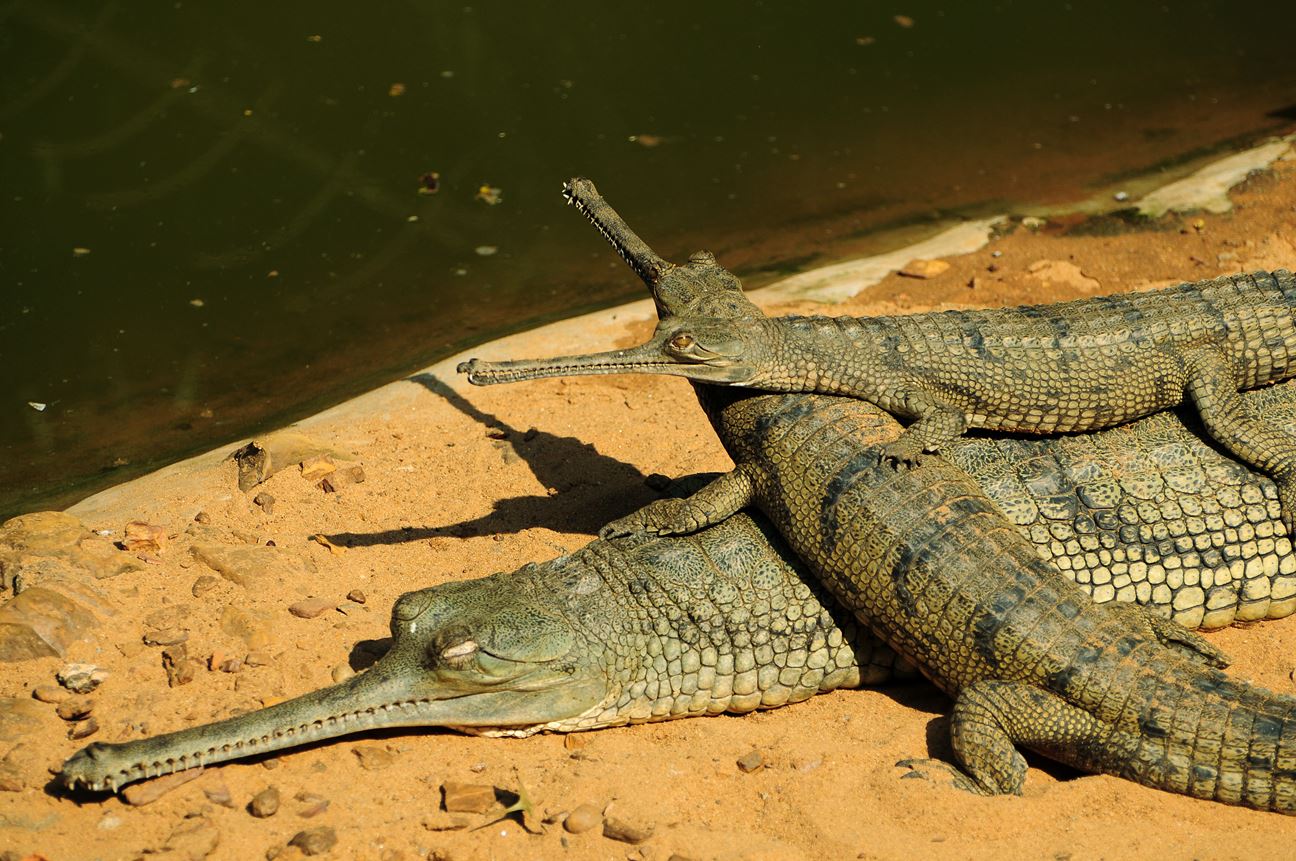We have a true reason to celebrate after this World Crocodle Day – the birth and release of 116 critically endangered gharials on the Gandak River banks in Bihar!
Gharials are a type of fish-eating crocodiles, belonging to the crocodilian family. They are the longest among them and are distinguished by their long snouts. The word Gharial comes from an Indian word ‘ghara’ which means pot; indicating the bulbous knob on their snout. The males use their snout to blow bubbles and vocalize to attract females.
Physical Features

- Their colour is olive, which gets darker as they age. Their underparts are yellowish-white in colour.
- Adult males reach up to 9–19 feet and adult females reach up to 8–14 feet.
- They may weigh up to 2,000 pounds.
- Their long and thin snouts have 110 sharp and interlocking teeth.
Behaviour
They have sensory cells in their snouts that help them detect vibrations in the water. As the fish come closer, they move their head from side to side and stun the fish. Lastly, they grab the fish in their sharp teeth. Their uniform hundreds of sharp teeth make them efficient fish catchers. The adults feast on fish, but the young may also eat frogs and insects. They are cold-blooded animals, so they keep regulating their body temperature by resting in the shade to cool down, and basking in the sun to warm up.
Habitat
Initially, Gharials were found in India, Pakistan, Nepal, and Bangladesh. But today, their population can only be seen in parts of India and Nepal. In India, they are found in Bihar, Madhya Pradesh, Orissa, Uttar Pradesh, and Uttarakhand. These are found swimming along the Chambal, Son, and Girwa Rivers and other tributaries of Ganga.

They are found in fast-flowing rivers, and river bends where the water is deep. They need freshwater, which is why their population indicates the quality of a particular water body. They usually leave the water only to nest or bask in the sun.
Recently, a six-foot gharial made news by swimming a distance of over 1,000 km from Nepal to Bengal. Its marking showed that it was released in the Narayani River tributary – Rapti River, and later got caught in a fishing net in the Hooghly. The officials are deciding on a safe release spot for the animal. There have been 7-8 other notable long-distance movements in the past.
Breeding
- The males reach sexual maturity after reaching the body length of almost 13 feet, which is when it’s 15–18 years of age. Females are mature when they reach a body length of almost 8 feet.
- The mating season is from January to February.
- Females are seen to travel almost 80–120 km searching for suitable breeding groups and nesting areas. The nests are made during the dry season and the eggs are laid in sandbanks, alongside slow-paced water.
- A female lays an average of 30–40 eggs in March and April. Some large females may even lay up to100 eggs.
- The eggs are incubated for 70 days and the young are hatched mostly in June or July.
- The young stay with their mothers for a long time, up to months. The mother is seen feeding in shallow water with them during the first year.
Threats
Any kind of artificial barriers like dams or human activities hugely affect these animals. The barriers affect the quality and quantity of the available water, making it unsuitable as a habitat. Many young gharials also die because of their long snouts getting entangled in fishing nets and eventually drowning. River bed cultivation or sand removal from the banks results in the animals migrating to other areas. Mining activities also may cause direct mortality in eggs. It was noted that there has been a 98% decline in their population since the 1940s. But the most alarming drop to only 250 individuals left happened in 2006, which was when it made to the endangered list.
Conservation
During the 1970s and 1980s, India and Nepal took some significant efforts and set up release programs. They set 6,000 captive-bred free in the wild, but there was a lack of effective monitoring, hence the outcome was unknown.
Recently, a nature conservation organization, WTI, tracked some nesting spots around the Gandak River in 2016. Local farmers and fishermen were thereafter trained to look out and protect these breeding sites. Thereafter, their efforts for conservation started.
In April 2020, 3 nests were shifted to manually excavated shelters a few meters away from the original nests. They were protected 24X7 from predators like dogs or monitor lizards. On June 14, 86 out of the 94 eggs successfully hatched and 30 more eggs hatched in a nearby nest. On World Crocodile Day, June 17, 2020, 116 gharial offsprings were released into the Gandak River by the WTI volunteers. In addition to that, 72 more hatchlings were found in the wild nests over the next 5 days. The river already had a total of 251 gharials in March 2020, which later reached a number more than 400 in June.
Soon after that, 40 gharials (8 males and 32 females) were also released in the Ghaghara River in Uttar Pradesh after being tagged in Lucknow’s Kukrail Gharial Rehabilitation Centre. These animals are scute-clipped with unique marked patterns which give away the place they are released in.
Luckily, such release programs have started in large numbers. These animals are released at the start of winter as the waters are cleaner and there are fewer chances of floods. Also, their food requirement is less in this season, which increases their survival chances.
Hopefully, things should go as per the plan. If yes, then the Gandak River stretch will be declared as a conservation reserve by the Bihar Government. This species will be successfully saved. The 140-km stretch is also home to various turtles, the Gangetic Dolphin, and many birds.